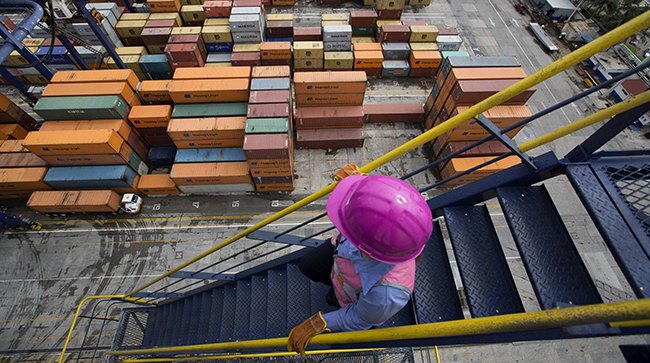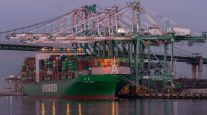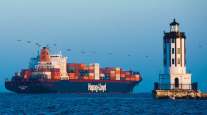Staff Reporter
Information, Communication Technology Can Improve Port Efficiency, Experts Say

[Stay on top of transportation news: Get TTNews in your inbox.]
WASHINGTON — The adoption of information and communication technology can help facilitate operations at ports, according to Agustina Calatayud, senior transport specialist at the Inter-American Development Bank.
The Inter-American Development Bank serves as a source of development financing for Latin America and the Caribbean. Calatayud spoke at the Transportation Research Board’s annual meeting Jan. 13.
Calatayud and her team, which included representatives of the Texas A&M Transportation Institute and Newcastle University in England, considered data from the Port of Veracruz in Mexico. Located along the Gulf of Mexico, about 250 miles east of Mexico City, Veracruz is an important port location. Calatayud said the port had a throughput of 1,117,304 20-foot-equivalent unit containers, or TEUs, in 2017.
Specifically, the team studied the port terminal and the Centro de Atención Logística al Transporte, or CALT. Mario Monsreal, research scientist at the Texas A&M Transportation Institute, explained the CALT functions are a registration and check-in stop that people must visit before proceeding to the actual port terminal. Truckers need to check in there and clear paperwork before they are called to the port.
The team discovered that introducing technologies, such as bar code registration and GPS, could reduce delays and errors at the port. Currently, the CALT and the port use manual registration and rely on phones and radio to determine the location of containers. Calatayud said such communication technologies can improve supply chain performance.
“The decisions and performance of one of the nodes is going to impact the performance of the port terminal,” Calatayud said.

A worker at the Port of Veracruz. (Susana Gonzalez/Bloomberg News)
Although the research indicates that bar code readers could save time and perform more accurately than humans, the technology hasn’t been applied. Calatayud said the main barrier is coordination and understanding among port and terminal stakeholders. She acknowledged that introducing new technology may involve making adjustments.
“However, one thing we saw is it’s not just about implemented technology, but taking the information for decision making,” Calatayud said. “Re-engineering might be needed in order to leverage those benefits.”
Monsreal said one goal of establishing a system of bar code registration is reducing expenses in addition to delays.
“There’s a lot of costs and a lot of time by doing things manually,” Monsreal said. “Implementing bar code will streamline [the process].”
Monsreal said he also is involved in a blockchain project to support port community groups. Blockchain is similar to a general ledger, the kind that would be maintained by two parties that had just completed a business transaction.
Blockchain is not anonymous; every company using the service knows who else is using it. The records on the database cannot be tampered with, and any changes to the information presented in the database must be made with the consent of all participants.
Monsreal said blockchain is a key component of the project to ensure information is secure and assigned to the party that needs to access the information.
“One of the barriers is the stakeholders,” Monsreal said. “Even though they work together, when they need to share information, they start to get reluctant.”
Want more news? Listen to today's daily briefing:




